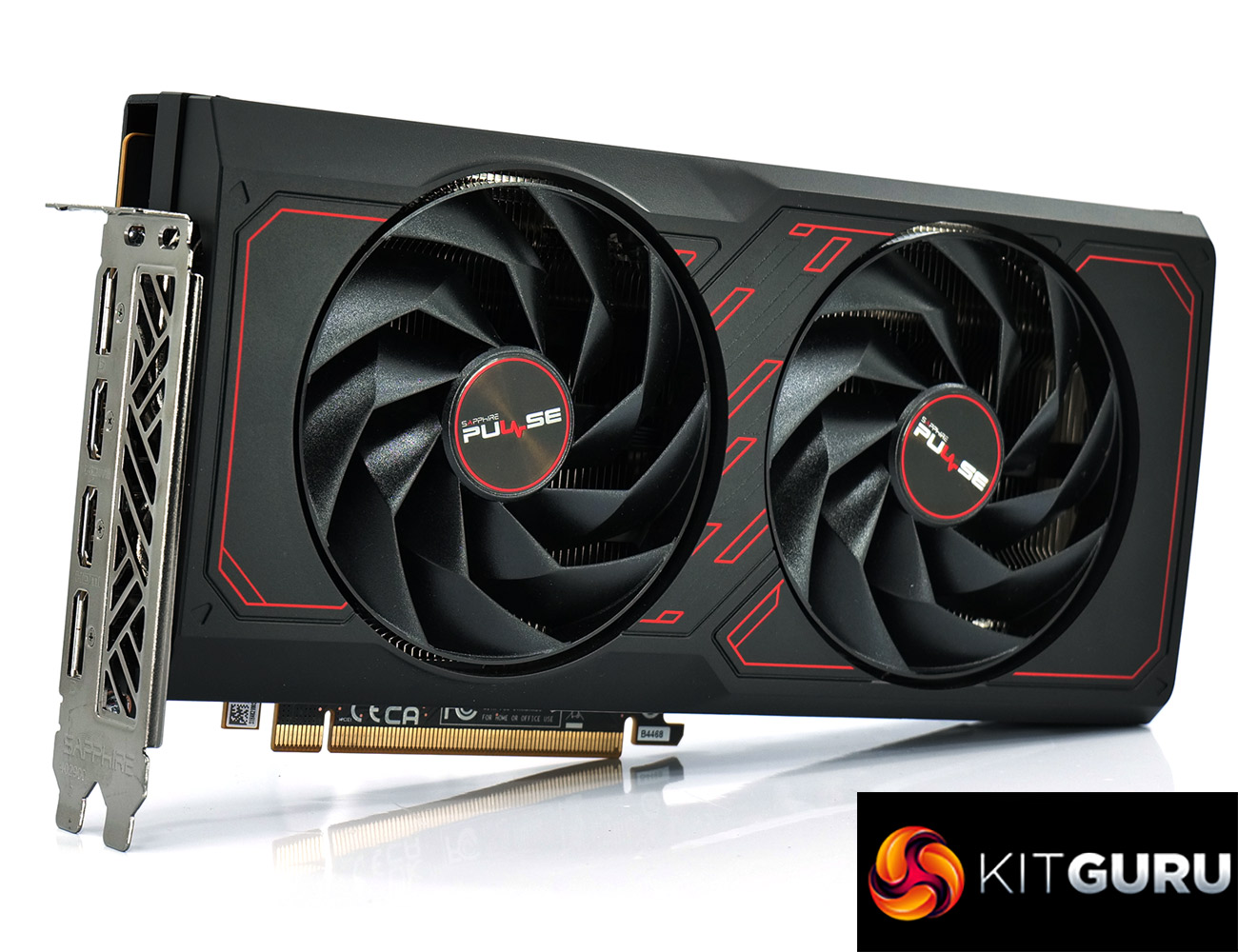Slotting in between a bevy of GPU launches from Nvidia, today we have put the AMD RX 7600 XT through its paces. There's no denying it, this isn't a particularly exciting launch given it uses the exact same die as the RX 7600, with the only real changes being the increased clock speed and double the amount of VRAM.
That means anyone hoping for a real bump in performance over the RX 7600, and something that sits closer to the the RX 7700 XT, are likely to be disappointed. Putting VRAM aside for a moment, we typically the saw the 7600 XT coming in just a handful of percent faster than the non-XT card at 1080p, while it's typically 5-10% faster than the RTX 4060.
Using the same Navi 33 die also means plenty of our original criticisms of the RX 7600 remain valid today. Ray tracing performance is still very poor and well behind Nvidia, the 128-bit memory interface means performance at 1440p scales slightly worse compared to GPUs with 192- or 256-bit memory interfaces, while efficiency is actually worse than the RX 7600 due to the increased power demands.
The thing is, the RX 7600 XT hasn't been designed to address those criticisms. Instead, the whole point of this graphics card's existence comes down to one specific area – VRAM. We've talked about the small gains on offer versus the RX 7600 in titles where VRAM is not a factor, but in the couples of games I tested where there is a clear benefit to having more than an 8GB framebuffer, the difference can be transformative – just check out the results we saw in The Last of Us Part 1, along with Ratchet and Clank: Rift Apart.
I also approach talk of value with a similar mindset. Looking at the data in this review, it is not incorrect to say that the RX 7600 XT offers worse cost per frame than the RX 7600, which doesn't seem like progress. That, of course, doesn't take into account how performance may change over the next year or two. We've already seen how increasing numbers of AAA games have struggled on 8GB cards over the last 12 months, and I expect that trend to increase exponentially – at which point the relative value of the 7600 XT could be significantly different to what it is today.
The way I see it, the RX 7600 XT is likely to appeal to a certain niche. I'm imagining the type of gamer who plays at 1080p or 1440p, always wants to use Ultra settings, typically plays AAA games on day one – without wanting to spend a fortune on their graphics card. How big that niche may be I have absolutely no idea, but if that sounds like you, then opting for the 7600 XT over the 7600 or another 8GB card like the RTX 4060 is likely to be a sound investment as we're already seeing the benefit of having more than an 8GB framebuffer.
It's not a slam dunk however, as I'd also suggest looking at the RX 6700 XT. That GPU launched for £420 back in 2021 but is currently on sale for just £340, and typically offers 13% better performance than the 7600 XT, with its extra memory bandwidth helping matters at 1440p too. Yes, it does have less VRAM, but I think 12GB for this class of GPU is likely to be enough, especially as enabling ray tracing is not realistic in many games. If you want to pick up a 6700 XT I'd just advise you to be fairly swift, as it looks like stock may finally be drying up – at the time of writing, there's just a single model in stock at OCUK, while Scan isn't even listing the cards anymore.
In my view, the RX 7600 XT is designed to solve a specific problem. It certainly won't be for everyone – if you only play esports games or don't feel the need for Ultra textures, then an 8GB card is likely to be plenty for 1080p gaming, while if you value ray tracing and DLSS, the RTX 4060 is the obvious choice while offering similar rasterisation performance for about £290 here in the UK. Even then, I still find myself tempted by the RX 7600 XT, as the idea of a 16GB GPU that can play pretty much anything at 1080p Ultra settings, retailing for £310, is pretty enticing.
A final word on the Sapphire Pulse model we were sent today as there's no AMD reference card. It's a very solid design, offering a larger cooler than the RX 7600 Pulse in order to better handle the increased heat output of the XT. It certainly manages that, with a peak GPU temperature of 69C, while it kept noise levels to a minimum as well. It's certainly worth picking up if you do decide on an RX 7600 XT.
We don't yet have a buy link for the AMD RX 7600 XT but it is set to retail from £310, or $329.
Discuss on our Facebook page HERE.
Pros
- More than 8GB VRAM already makes a difference today, and we only expect that to become more apparent over the next 1-2 years.
- Faster than RTX 4060 for rasterisation.
- One of, if not the cheapest 16GB cards on the market.
- Sapphire Pulse model is compact and very quiet.
- Cost per frame is still very competitive.
Cons
- Gains over the RX 7600 are very small when VRAM doesn't come into play.
- RTX 4060 is significantly better for ray tracing, while also offers DLSS support.
- Less efficient than RX 7600.
KitGuru says: It may not be much faster than the RX 7600 today, but we expect that to change in the next couple of years as games continue to utilise more and more VRAM.
 KitGuru KitGuru.net – Tech News | Hardware News | Hardware Reviews | IOS | Mobile | Gaming | Graphics Cards
KitGuru KitGuru.net – Tech News | Hardware News | Hardware Reviews | IOS | Mobile | Gaming | Graphics Cards




